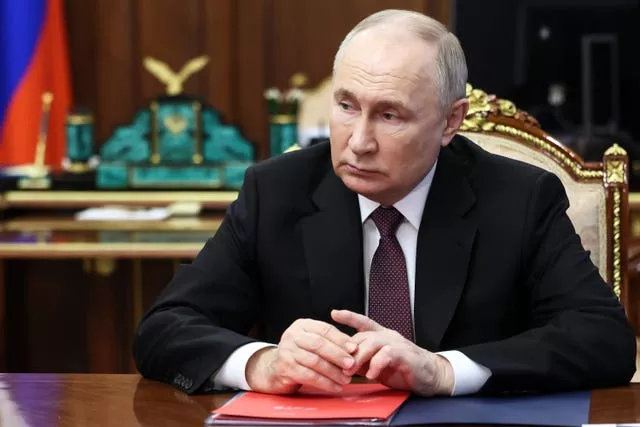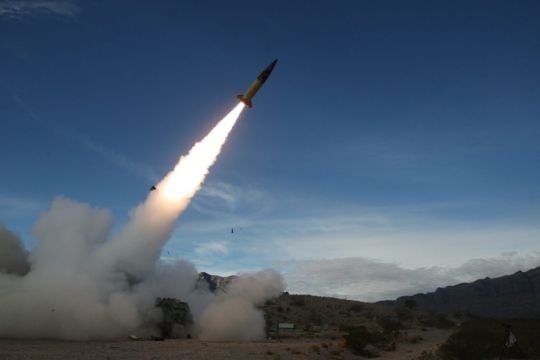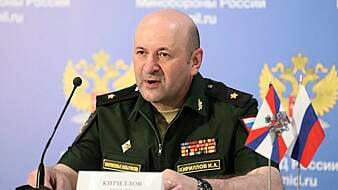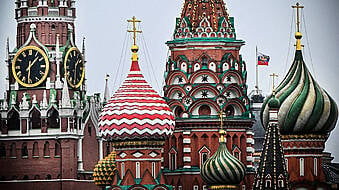The Russian foreign ministry has summoned the American ambassador to protest against what it says was the use of US-made advanced missiles in a Ukrainian attack on Russian-annexed Crimea that reportedly killed four people and wounded more than 150.
Washington “has effectively become a party” to the war on Ukraine’s side, the ministry said, adding: “Retaliatory measures will certainly follow.”
There was no immediate comment from US or Ukrainian officials. The Associated Press could not independently verify Russia’s claims about the missiles used.
Kyiv’s forces have relied heavily on Western-supplied weaponry since Russia’s invasion more than three years ago.
What are the new sanctions against Russia? What are they targeting?
▪️ LNG
▪️ SPFS financial messaging system
▪️ Putin’s dark fleet
▪️ Sanctions circumvention
▪️ Funding of political parties from the Russian state
Learn more ↓#StandWithUkraine pic.twitter.com/MsPBHafPGjAdvertisement— European Commission (@EU_Commission) June 24, 2024
The military aid has been crucial in allowing Ukraine to hold the Kremlin’s army at bay, with few major changes along the 620-mile front line in eastern and southern Ukraine for many months.
Some Western countries have hesitated over providing more – and more sophisticated – help for Kyiv’s army because of concerns about potentially provoking the Kremlin.
But as Ukraine has at times struggled to hold the line against Russia’s bigger and better-equipped military, Western leaders have gradually relented and granted more support.
In the latest key development, the Pentagon said last week that Ukraine’s military is being allowed to use longer-range missiles provided by America to strike targets inside Russia if it is acting in self-defence.
Since the outset of the war, the US had maintained a policy of not allowing Ukraine to use the weapons it provided to hit targets on Russian soil for fear of further escalating the conflict.
Crimea, which Russian annexed from Ukraine in 2014 in a move that most of the world rejected as unlawful, long had been declared a fair target for Ukraine by its Western allies.
Russian authorities said that the dead in Sunday’s attack included two children who were hit by falling debris from Ukrainian missiles that were shot down over a coastal area in Sevastopol, a port city in Crimea. It said cluster munitions, which critics say harm more civilians than combatants, were also used.
Russia said the missiles were US-made ATACMS, a long-range, guided missile. It summoned US Ambassador Lynne Tracy to the foreign ministry.
💬 Maria #Zakharova: On June 19 and 21 the Kiev regime launched new terrorist attacks against #Energodar satellite city in the vicinity of Zaporozhskaya nuclear power plant (#ZNPP).
❗️ This way the Kiev regime continues to prove its terrorist nature.
👉 https://t.co/UwtHYD3BdO pic.twitter.com/zelnTFY6rP— MFA Russia 🇷🇺 (@mfa_russia) June 24, 2024
The targeting and “mission input” for such missile attacks is carried out by US military experts, the ministry statement alleged, saying the United States bears “equal responsibility for this outrage” with the Ukrainian authorities.
It went on to say that “allowing strikes deep inside the Russian territory will not be left unanswered”.
Meanwhile, the Russian defence ministry reported striking a “major logistical hub” of the Ukrainian military that held Western-supplied missiles and other weapons.
It said the strike was carried out by warplanes, drones, ground-launched missiles and artillery. The ministry did not name its location.
Meanwhile, the European Union has slapped new sanctions on Russia, targeting Moscow’s shadow fleet of tankers moving liquefied natural gas (LNG) through Europe as well as several companies.
In a statement issued at a meeting of EU foreign ministers, the bloc said that it will “forbid reloading services of Russian LNG in EU territory for the purpose of trans-shipment operations to third countries”.
The EU estimates that about four-to-six billion cubic meters of Russian LNG was shipped to third countries via EU ports last year.

Russia is suspected of running a “ghost fleet” to evade sanctions and keep up the flow of energy earnings so that it can finance the war.
The measures will target ship-to-ship and ship-to-shore transfers as well as reloading operations.
It also involves a crackdown on the re-export of LNG to third countries via the EU, plus a ban on new investments to help Russia complete LNG projects it is working on.
A total of 61 new “entities” – often companies, banks, agencies and other organisations – were added to the EU’s list, including a number of them in China, Turkey and the United Arab Emirates.
Many are accused of circumventing the bloc’s sanctions or providing sensitive equipment to Russia.
Around 50 more officials are also being targeted with asset freezes, as well as travel bans.
Russian president Vladimir Putin and foreign minister Sergey Lavrov, as well as scores of legislators and several oligarchs are among more than 1,700 people already listed by the EU.
The more than 400 entities previously hit include companies working in the military, aviation, shipbuilding and machine sectors, the Wagner mercenary group, political parties and banks.
Around €210 billion worth of Russian Central Bank assets are blocked in the EU.







